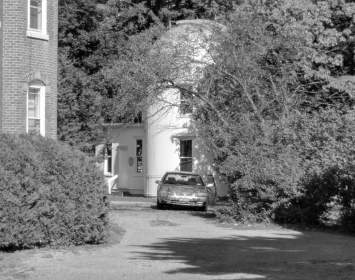
William Smith (1818–1912) was an entrepreneur, self-taught scientist, patron of the arts and sciences, and partly closeted freethinker. Late in his life, Smith befriended Elizabeth Smith Miller and others in her suffragist circles. Miller and her fellow activists persuaded him to endow a nondenominational women’s college. Founded in 1906 as the William Smith College for Women, the institution still thrives today; its “co-ordinate” structure is unique in American higher education.
Smith was born into poverty in Kent, England. The family emigrated to Geneva, New York, in 1843, when William was twenty-five. Geneva was then the center of a flourishing nursery industry that sold graft stock to grape growers and fruit farmers and ornamental plants to the wealthy. After learning the trade, in 1846 the brothers William, Thomas, and Edward Smith founded their own nursery company. It thrived, partly because of William’s self-directed studies of plant breeding. This led him to read widely in biology and then in other sciences, especially astronomy, even as his business success made him a millionaire. A private man whose childhood sweetheart had died young, Smith never married.
Originally an Anglican, Smith broke from denominational Christianity in adulthood. In time he became an open Spiritualist, but it may not have been widely known in Geneva that he eventually renounced traditional religion altogether. He attended the August 23–27, 1882, convention of the New York State Freethinkers Association at the Freer Opera House in Watkins, now Watkins Glen. At that convention D. M. Bennett, publisher of the national freethought paper The Truth Seeker, was honored. Three years later, in 1885, Smith responded to an appeal for funds in The Truth Seeker by Rochester minister-turned-freethought-evangelist Charles B. Reynolds. Reynolds sought $500 so he could buy a fifty-foot “Liberal tent” and offer freethought lectures in rural locations that offered no lecture halls available for rental. Smith responded, sending $300, the largest single gift that Reynolds received. The paper acknowledged the gift in a brief notice. In the June 13, 1885, issue of The Truth Seeker, a voluble Reynolds wrote: "Thanks to the princely liberality of such whole-souled friends of humanity and Secularism as William Smith, of Geneva, New York."
(Reynolds’s tent was short-lived; in 1886 New Jersey hooligans burned it, and Reynolds was arrested for blasphemy. At his May 1887 trial, Reynolds was defended by none other than Robert Green Ingersoll.)
Smith became an active philanthropist. To enhance Geneva’s scientific stature, in 1888 he built a brick house and a small but capable astronomical observatory next to his own home in Geneva, recruiting astronomer William R. Brooks to reside there and direct the observatory. Brooks discovered numerous comets from the Geneva observatory. (The facility is now privately owned and has been restored.) In 1894, Smith constructed a three-and-a-half-story brick and stone opera house in downtown Geneva, a high quality performing arts facility that still anchors the community today.
Smith was well-known among wealthy Genevans. Among those was Elizabeth Smith Miller, daughter of liberal philanthropist Gerrit Smith and a leading activist for woman's suffrage and dress reform. (Nineteenth-century practice was to use the singular, woman's, when referring to women as a class; later practice was to use the plural, women's.) Smith was a frequent guest at Lochland, the lakeside mansion where Miller conducted an ongoing salon for reformers and intellectuals. Smith became close friends with Miller, her daughter Anne Fitzhugh Miller, and educator-conservationist Anna Botsford Comstock. They recruited Smith to the woman's suffrage cause; on multiple occasions he donated use of his opera house for suffrage meetings, including for the twenty-ninth annual convention of the New York State Woman Suffrage Association (NYSWSA) in 1897.
As the twentieth century dawned, Smith, in his eighties, contemplated making a very large gift to found a Spiritualist college at Geneva. Miller and her companions persuaded him to endow a women’s college instead. Inspired by the example of Cornell University (where Comstock was on the faculty), the William Smith College for Women would be nondenominational and would offer women a fully-rounded liberal arts education, unusual for women’s institutions at the time.
William Smith died on February 6, 1912, aged ninety-three, only four months before the graduation of his college’s inaugural class.
In 2008, during William Smith College centennial celebrations, a statue of Smith was unveiled. The sculptor was Ted Aub, a Hobart and William Smith Colleges art professor who also created the statue of Amelia Jenks Bloomer introducing Susan B. Anthony to Elizabeth Cady Stanton that stands on the shore of Van Cleef Lake in Seneca Falls, New York.

William Smith
William Smith, 1818–1912.
Associated Historical Events
Sixth New York Freethinkers' Association Convention
August 23–27, 1882
Founding of William Smith College
1908–1911
















